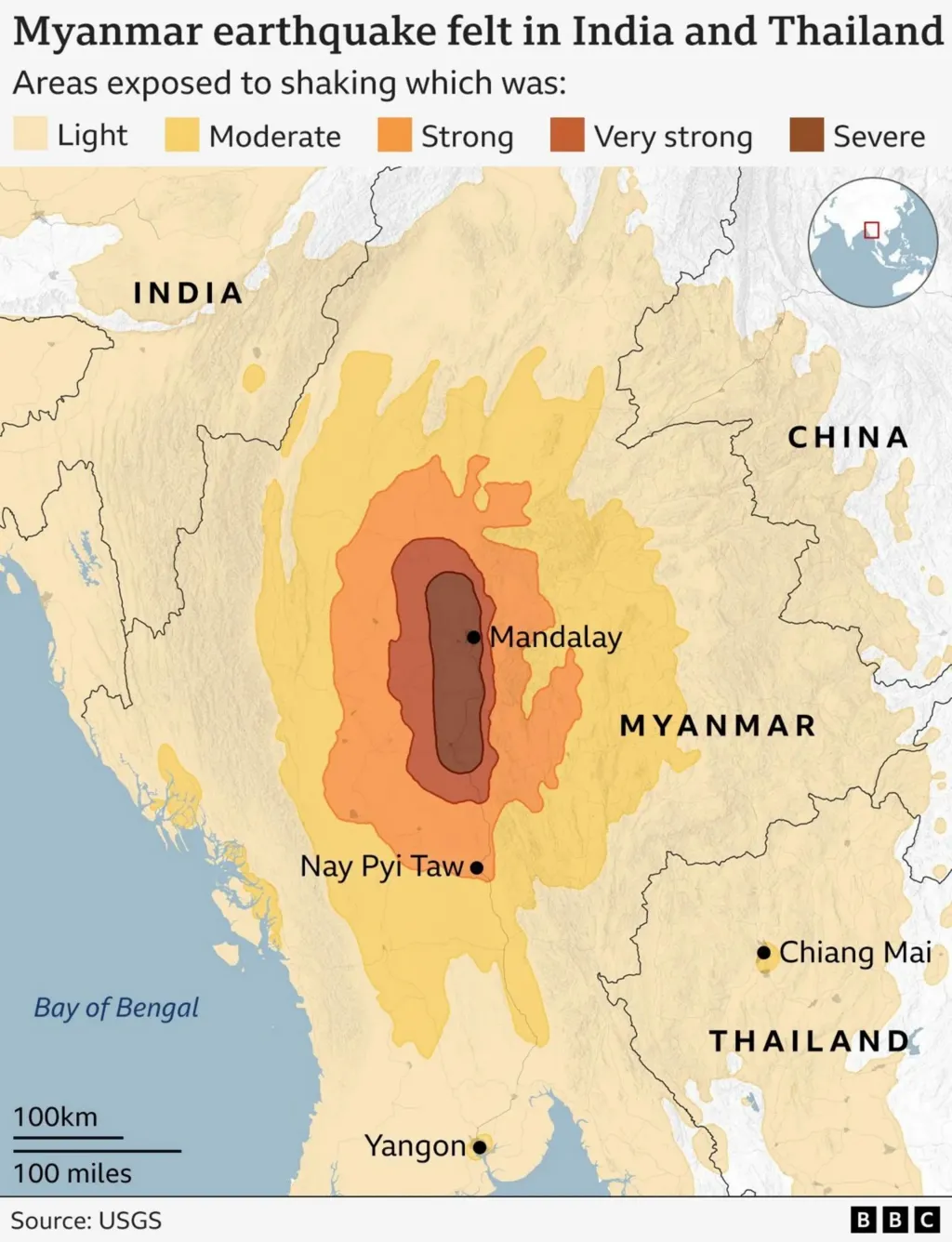Written by Kelly Were
Mandalay, once known as Myanmar’s “city of gold,” is now grappling with the aftermath of a devastating earthquake that struck near the city last Friday.
The 7.7 magnitude quake and subsequent aftershocks have caused widespread destruction, claiming over 2,700 lives, with thousands more injured or missing. Local authorities and residents fear the death toll could continue to rise.
The quake has left many in the city homeless, with survivors forced to live in tents on the streets, fearing further aftershocks. Relief efforts are struggling due to poor infrastructure and ongoing civil conflict.

Many have been left without food or water as rescue teams work tirelessly to find survivors. A resident, who lost her aunt in the quake, described the grim process of “cremating bodies in stacks” due to the overwhelming number of casualties.
While some survivors have been rescued, the situation remains dire. Military chief Min Aung Hlaing has warned the death toll may exceed 3,000, but experts fear the real figure could be even higher.
The quake has also deeply affected children. One local pastor shared how his son, traumatized by the destruction, has been repeatedly crying since the disaster.
The destruction has left many residents feeling hopeless and helpless, with the military’s response drawing criticism from rights groups. Humanitarian aid has been slow to arrive due to restrictions imposed by the military.
Mandalay, a city once famous for its glittering pagodas and Buddhist monuments, is now in ruins. As Myanmar continues to suffer from both natural and man-made disasters, the road to recovery remains uncertain.